1905-1906 Khasi Hills, India Revival (Dozens of Locations)
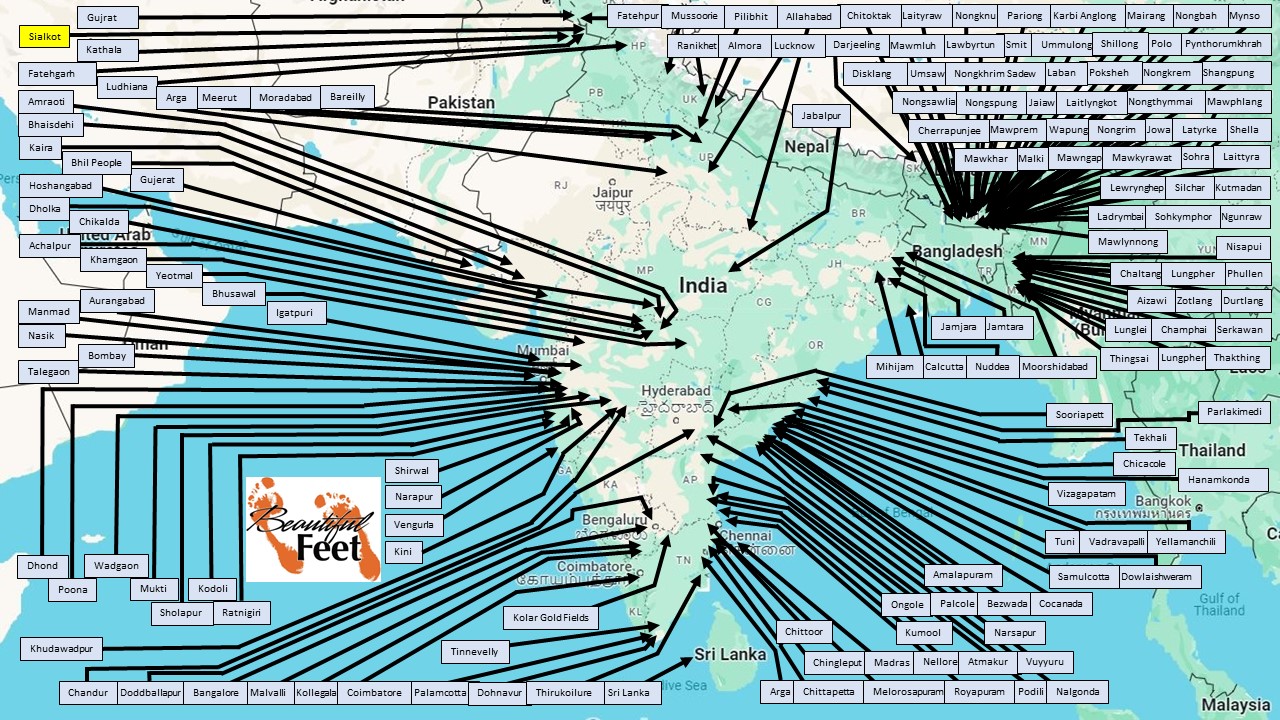
Some of the many revivals that spread across India from 1904-1906
Background to this Series of India Revivals
From 1904-1906, revival swept across India, touching every mission station and church, regardless of the denomination. Episcopalians, Presbyterians, Congregationalists, Baptists, Lutherans, Methodists, Brethren, Anglicans, Christian and Missionary Alliance, London Missionary Society, and the YMCAs and YWCAs, wherever the revival was welcome, blessings came. In addition, it fostered significant unity, breaking down previous barriers between denominations.
The 1904 Sialkot, India Revival appears to have been the spark that ignited the sweeping fires. Subsequently, upon receiving reports of the 1904-1905 Welsh Revival, prayer for revival intensified to such an extent that revival in India seemed unstoppable. The outcomes are documented in the following accounts:
- 1904 Sialkot, India Revival (Over 5 locations)
- 1905 Khasi Hills Revival (Dozens of Locations)
- 1905 Mukti Revival (5 Locations)
- 1905 Revival at Dohnavur (2 Locations)
- 1905 India Revivals I (20 Locations)
- 1905 India Revivals II (8 Locations)
- 1905 India Revivals III (5 Locations)
- 1906 India Revivals IV (10 Locations)
- 1906 India Revivals V (8 Locations)
- 1906 India Revivals VI (8 Locations)
- 1905-1906 India Revivals VII (9 Locations)
- 1905-1906 India Revivals VIII (14 Locations)
- 1906 India Revivals IX (8 Locations)
- 1906 Aurangabad, India Revival (5 Locations)
- 1906 Mizo, India Revival (13 Locations)

This revival took place in Khasi Hills, a district in the India state of Meghalaya.The revival eventually spread to the surrounding India states of Tripura, Mizoram, Manipur, Assam and Nagaland.
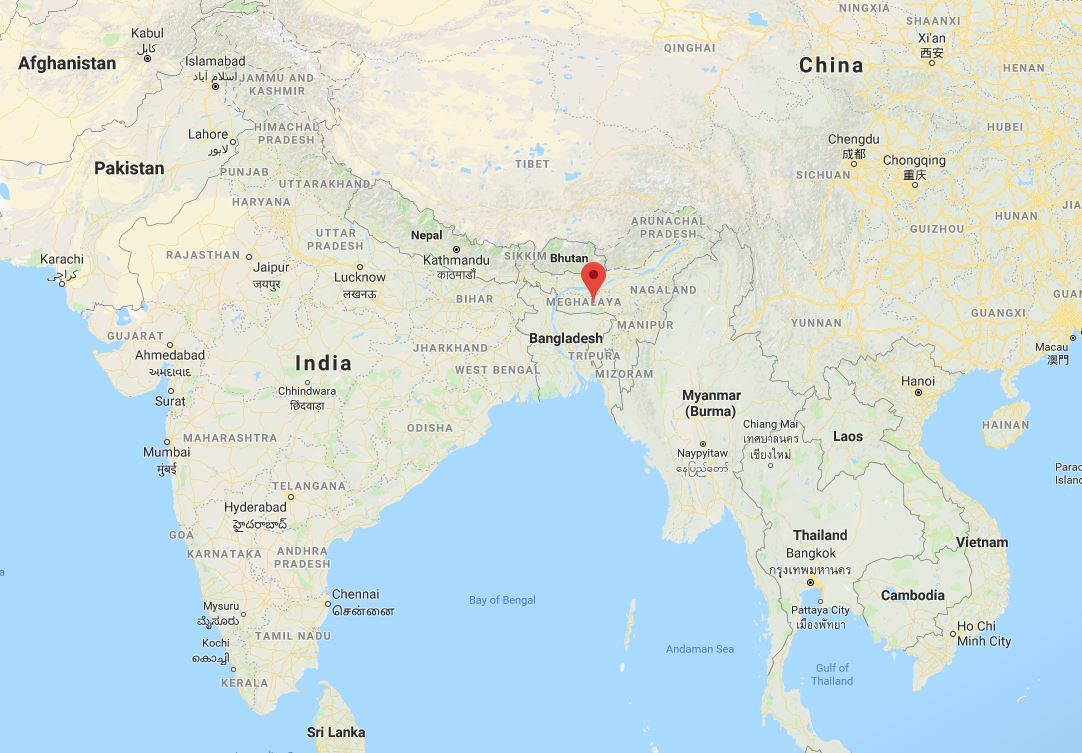
The red dot in the map shows the state of Meghalaya
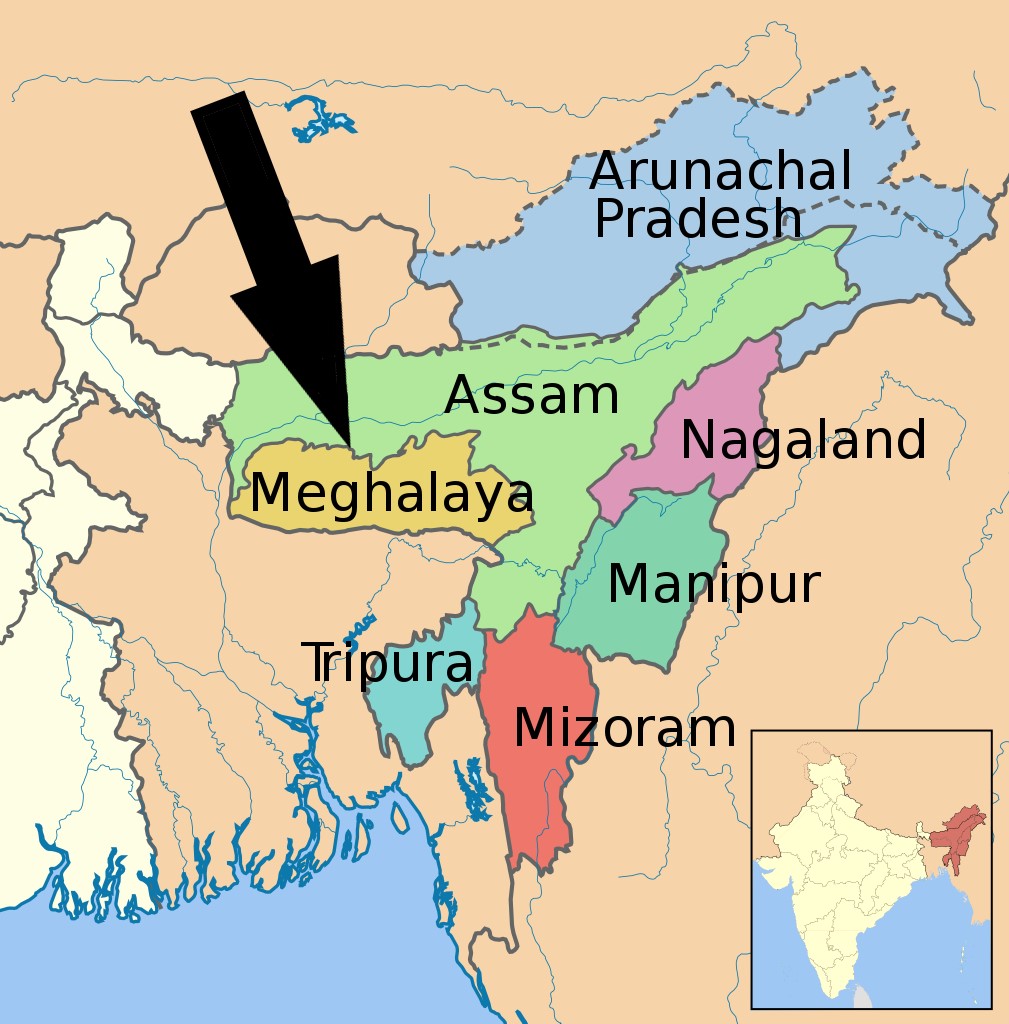
The Khasi Hills Revival took place in the state of Meghalaya, and eventually spread to the neighboring states.
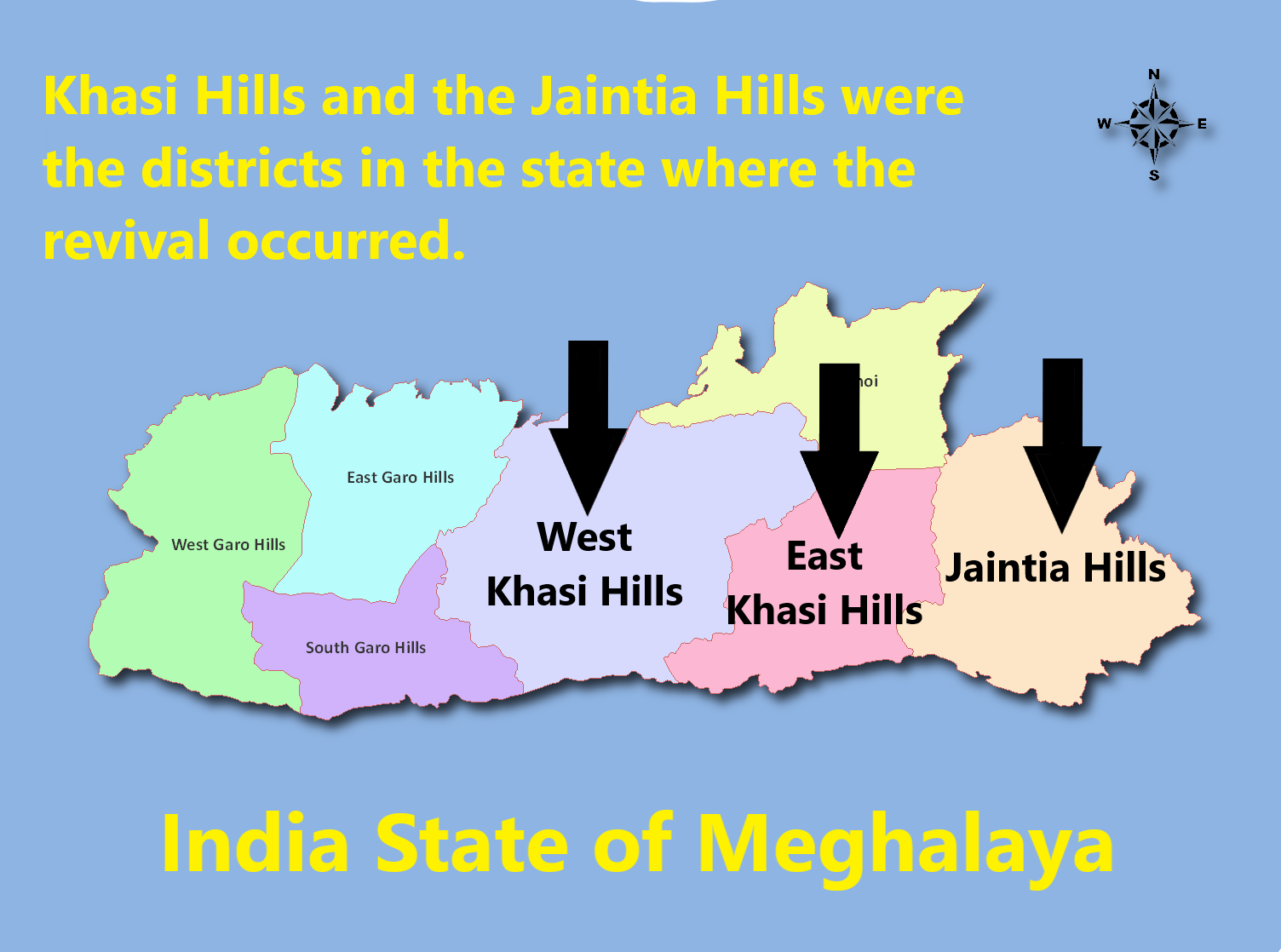
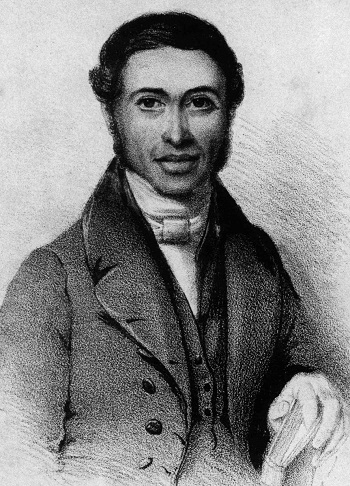
Thomas Jones: First Welsh Missionary
to the Khasi Hills – June 22, 1841
Introduction
The missionaries in the Khasi Hills were Welsh Presbyterians. The first ones to arrive were Thomas Jones and his wife Anne, on June 22, 1841.
Many other Welsh missionaries followed them in the years that followed.
►The first two Khasi converts were baptized in 1846.
►By 1866 there were 10 churches, having a total of 307 members.
►The Christians scattered around faced persecution from the pagan majority.
►By 1902 there were 22,275 attending churches.
Conditions Prior to the Revival
As the years had progressed and persecution decreased—Christians lost their first love. They were no longer zealous for the things of God. The Church had grown lukewarm.
Extraordinary Prayer
►At Calcutta, in 1902, two lady missionaries from the Khasi Hills listened to an address on prayer by R. A. Torrey. They were so moved by it that when they went back to the Khasi Hills their one theme was prayer.
►Early in 1903, the church in Mawphlang began praying every Monday night for a great outpouring of the Holy Spirit.
►At the end of 1904 the prayer meetings were still fervent and full of eagerness for revival.
►Toward the end of 1904, the news reached the Khasi Hills that God had visited His Church in Wales (1904-1905 Welsh Revival). The Khasi Christians were then filled with the hope that the same could take place among them.
►At the beginning of 1905, prayer meetings began to be held every night until the promised outpouring was given.
►In February of 1905, the annual General Assembly of the Presbyterian Church was held in the town of Cherrapunjee. There was a heightened expectation that the blessing they had been praying for would come soon.
►At the church in Mawphlang, on Sunday, March 5, 1905, the Sunday School class studied John 1:33, about the baptism of the Holy Spirit and the hindrances to obtain that blessing. This elevated everyone’s faith.
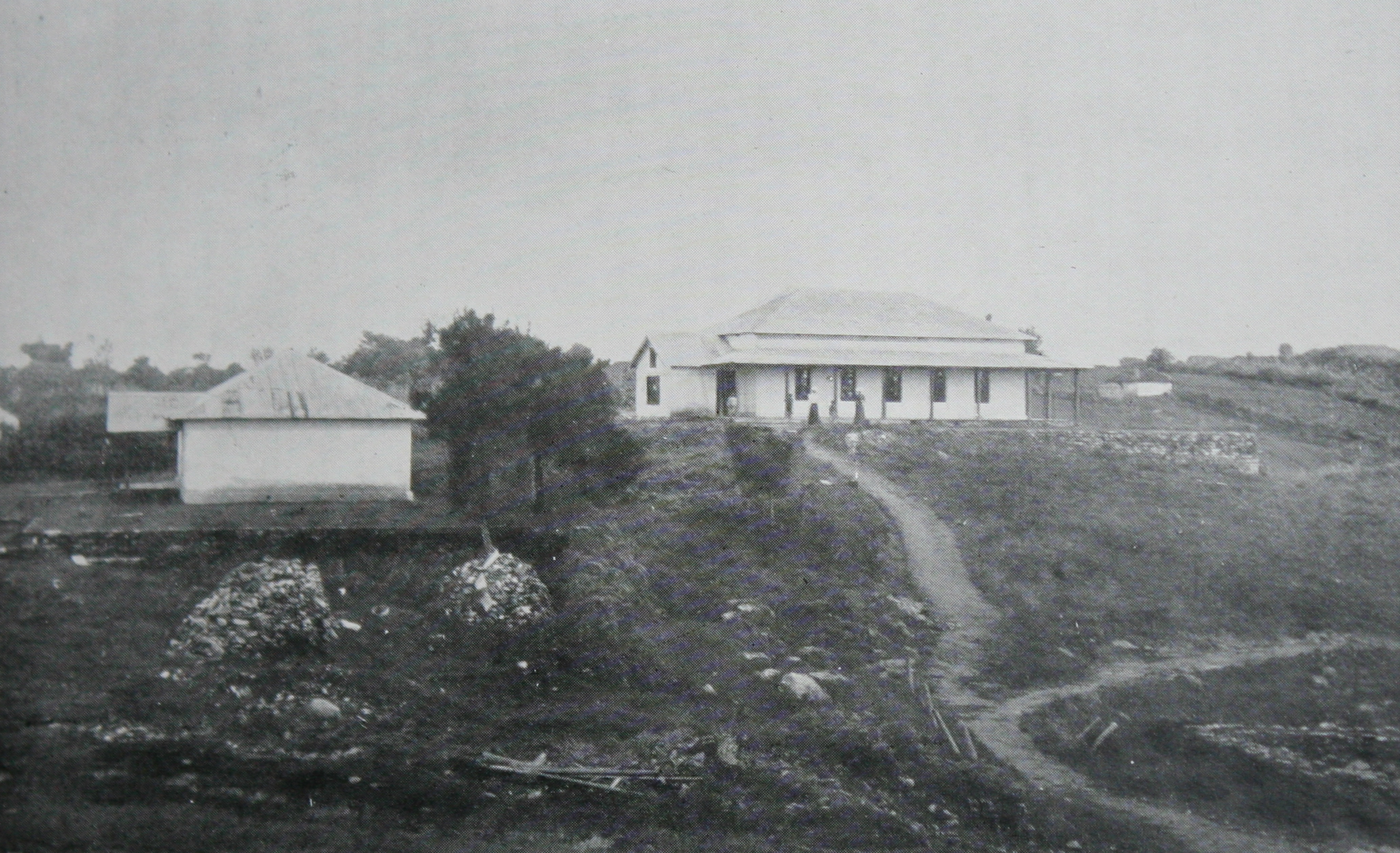
Mawphlang Chapel and School
What Happened
The Revival in Parïong
On Sunday, March 19, 1905, at the church in Parïong, the Sunday service was about to be closed, and one man, disappointed that the revival had not yet started, began to pray:
O God, pour down Thy Spirit upon us all now; whilst Thou art blessing the people of Wales so much, do not send us away empty.
Whilst this brother was praying, others also began to pray at the same time, both men and women, and then it is difficult to say what took place—many were praying; some were crying aloud for mercy; some men were fainting; nearly all were weeping; and some were praising God. It was a meeting never to be forgotten.
The strongest critics of the revival began crying and weeping, as the power of God came upon them so strongly that they had to be held up so they wouldn’t fall.
The missionary E. H. Williams reported on what happened:
All friends of the Mission will rejoice to know that a great Revival has begun in Khasi, and that it is spreading rapidly everywhere. There had been a general desire for some time that God would revive His work, and this desire was intensified by the reports of the Revival in the Mother Church in Wales.
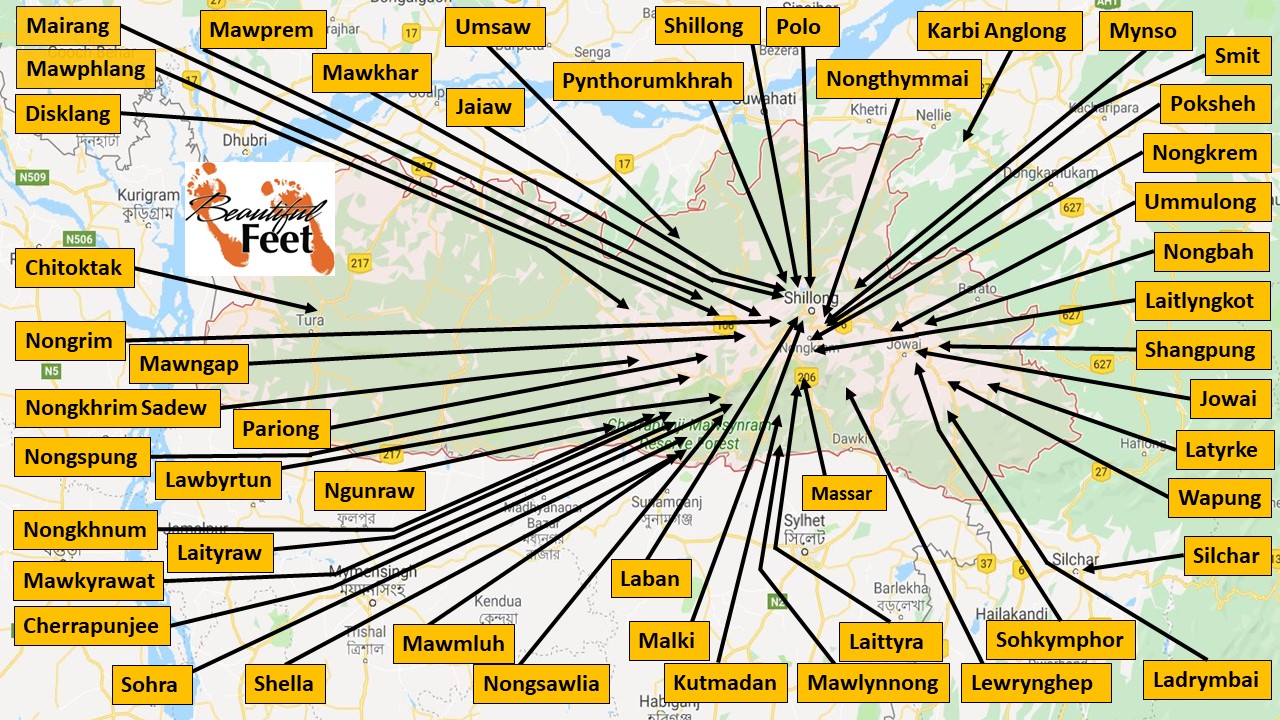
This map shows the Indian State of Meghalaya, where no fewer than 49 villages and cities experienced revival.
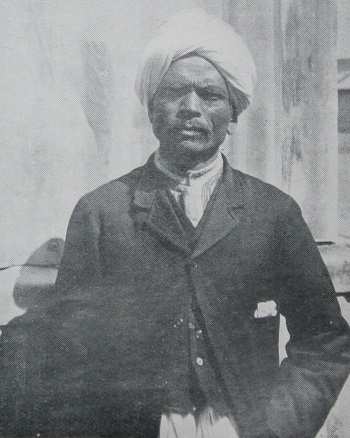
Rev. Khnong
Nongsawlia Presbyterian Church
The Revival at Nongsawlia
►As revivals are often spread when the story is shared at a new location, a Khasi evangelist who had been at the Parïong services, returned to his home church in Nongsawlia and gave them the revival news. That church was stirred up in their faith and gave themselves more intently to prayer, anticipating a similar outpouring at their church.
►On Saturday morning, March 25, 1905, during the Lord’s Supper, some were giving powerful testimonies of how the Lord was dealing with them.
►At about 1 p.m. on the same day they assembled again, and the feeling of the Lord’s presence deepened. Many were weeping the entire time.
►The last meeting started at 5 p.m. on the same day, and it was here that the fire fell.
►Many were testifying, through tears, of the presence of Jesus and of the work he was doing in their lives. A young girl stood, and as she began praying, her prayers grew in intensity and those around her began praying out loud, then the entire congregation was ablaze—there was weeping, wailing, and rejoicing.
►Many meetings followed that, both in the chapels and in homes. People would stand and confess their sins, then beg for forgiveness. After some would experience agony in travail over their sins, they would be caught up in rapturous praise because they recognized that the righteousness of God was now theirs.
►One man saw the flames of hell while in a trance, and afterwards preached powerfully to the pagans.
►Others had visions of Jesus and of his glory.
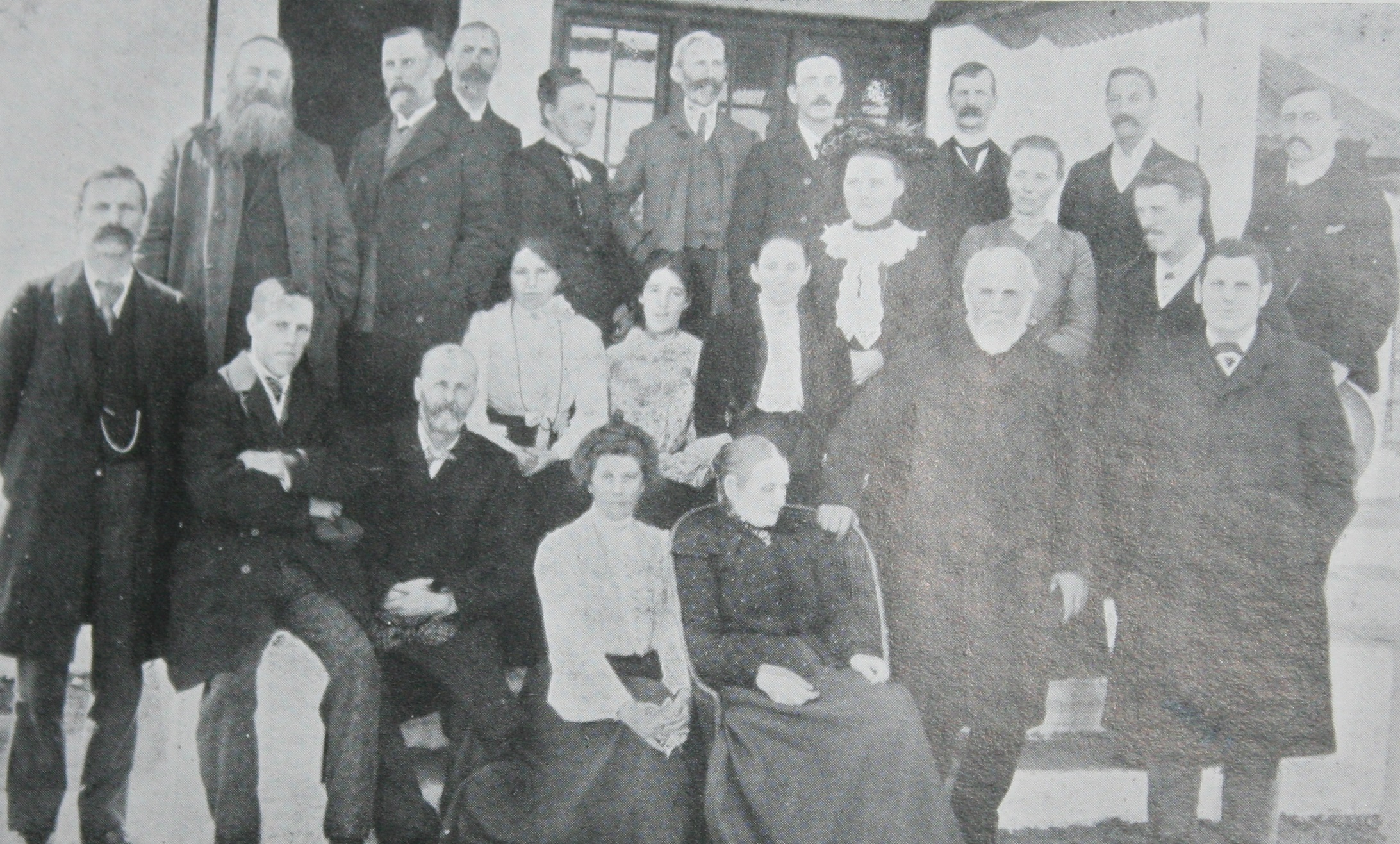
Very Back Row: Rev. F. Evans; Rev. W.S. Jones; Dr. E. Williams
Next Row: Rev. J. Jones; Rev. C. Evans; Mrs. R. Evans; Rev. T.W. Reese Dr. Jarvie; Rev. M. Griffiths
Three Standing to the Right: Mrs. Williams; Miss. E. Huges; Rev. J.P. Jones
Three Sitting in Center: Miss. L. Jones; Miss. Lloyd; Miss. B. Roberts
Front: Dr. O.O. Williams; Rev. J.G. Williams; Rev. R. Jones; Rev. Dr. Roberts; Rev. O. Evans
Seated Front: Miss. E.A. Roberts; Mrs. John Roberts
Missionaries at the Nongsawlia Assembly (1905)
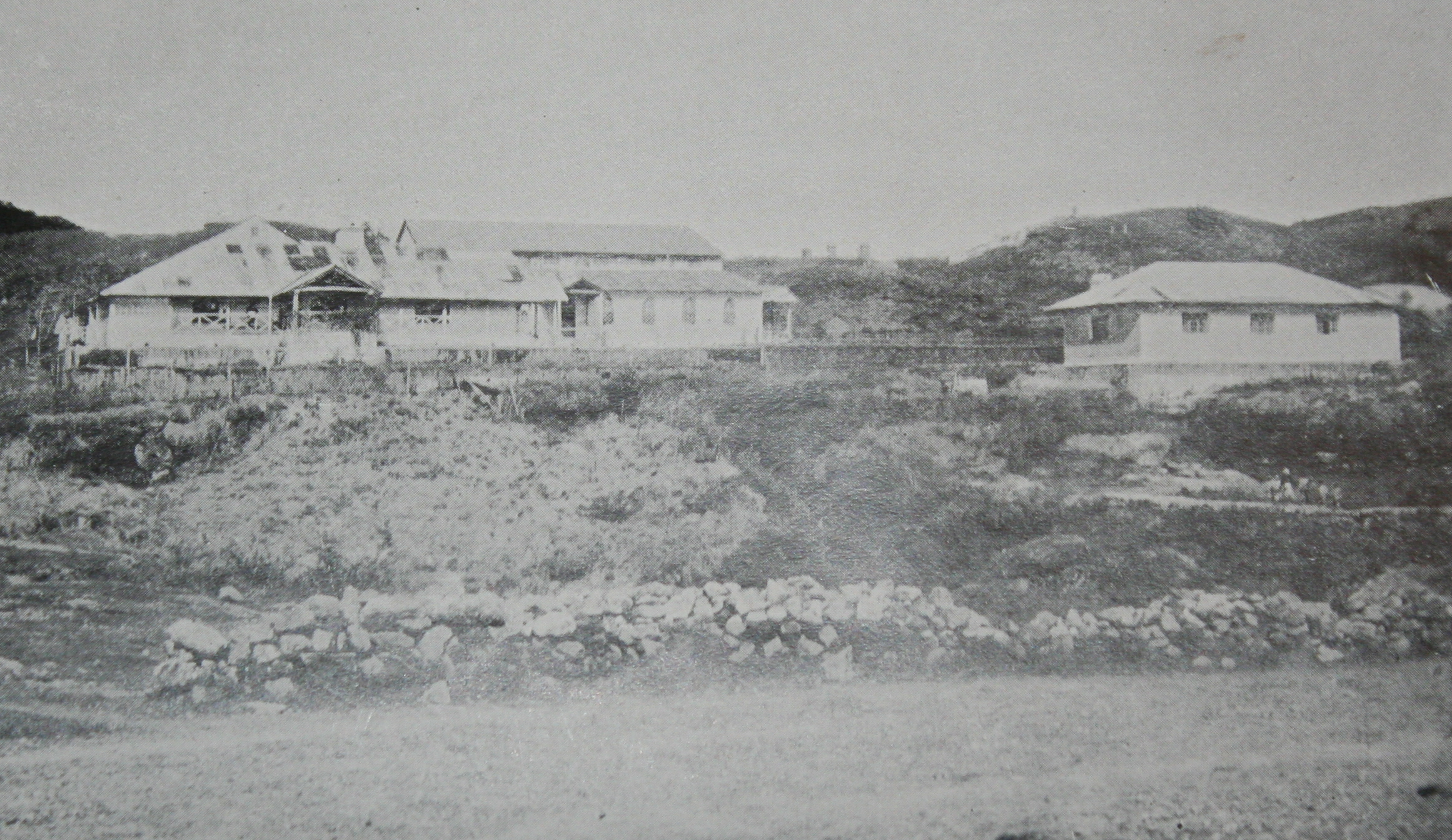 Nongsawlia Presbyterian Church, Mission House, Girls’ School
Nongsawlia Presbyterian Church, Mission House, Girls’ School
The Revival in Shillong
►Saturday, April 1, 1905, the congregation met in the evening to pray, and the prayers were unusual. The person opening the service prayed as if their “soul was parched with thirst, and fainting with hunger.” Soon others began to pray at the same time, and eventually the place was filled with loud crying, and some bursting out into heart-piercing cries for mercy. Others were shouting as in ecstasy, as if they were seeing Jesus.
►Due to some being converted on the spot, those close to them began loudly rejoicing by clapping their hands.
►Two people close to one another, so overwhelmed by the majesty of God, began singing “Crown Him Lord of All,” oblivious to everyone else who was praying at the same time.
The Revival in Mynso
After hearing of the revival in the Khasi Hills, the pastor’s wife in the village of Mynso, so desperate for revival, gave herself over to prayer and intercession, and the entire village was soon ablaze with a zeal for Christ.
The neighboring villages of Shangpung, Jowai, and Nongbah, though prayer had been intense before, increased the intensity of their prayers when the reports from the other villages kept flooding in. There wasn’t discouragement in their prayers, it was anticipation, as they laid hold of the words:
Though it tarry, wait for it, because it will surely come, it will not tarry. (Hab. 2:3)
It was on Monday, May 8, 1905, that the village of Jowai received its blessing, and it came through the children and young people.
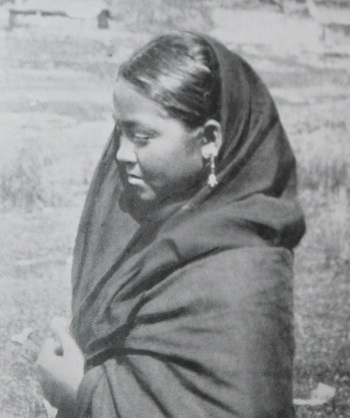
San Suki, a recent convert, led
over 140 from her village to Christ.
The Revival Among the Children
►In Jowai, the revival began among the children. A recently converted boy stood and told how God had forgiven him of his sins. His testimony affected all the other children, and the chapel was filled with sobbing, with many crying out for God to forgive them.
►A boy around nine years old was used to bring several people to Christ.
►The children held their own prayer meetings.
►Some of the children’s meetings went on for many hours, sometimes the whole day, and often far into the night.
►Some children went to a very large market and spoke to the shoppers, and so great was the effect that many of the shoppers ran to the chapel to get right with God.
The Second Year of the Revival
►From Friday, March 16, till Monday, March 19, 1906, there was an annual assembly held in the Khasi Hills. This year it was conducted at Mairang. Many people walked there, with some travelling four or five days. Between 8,000-10,000 assembled.
►For months leading up to the annual assembly there was fervent prayer for the Lord to send a great outpouring of His Holy Spirit as on the day of Pentecost.
►There was such anticipation for God’s presence that no other topic of conversation was made. With that much faith being exercised, God did not disappoint them.
Concerning this assembly, one missionary said
I doubt if there has ever been a more wonderful meeting held since Pentecost…The zealous ones from all parts came to the assembly, and those who failed to come were praying for its success…The success therefore came in answer to earnest believing prayer.
A missionary lady wrote:
We arrived on Friday morning at 8 a.m. and found the chapel simply packed…They were singing ‘All hail the power of Jesus’ Name,’ and I think that the singing of that one hymn must have taken considerably over an hour. They sang it and re-sang it, over and over as if they would never get tired of saying, ‘Crown Him Lord of all!’ Everyone seemed perfectly oblivious to everything but the sense of the divine presence.
Manifestations and Miracles
The following is a list of some of the phenomena that occurred.
►The pagans in the area had dreams that led to their salvation.
►Some Christians had dreams that led them to witness to others.
►Food multiplied, allowing for the feeding of 8,000-10,000 for several days.
►Many had visions.
►There was laughter, due to the extreme joy of the Lord (Psalms 126:1-2).
►Many experienced trances
►Prophecies were given.
►Some people’s bodies became rigid due to the power of God they were experiencing, and others were trembling, “shaking like leaves.”
►Prostrations, or faintings due to the power of God were not uncommon. Some sank into deep “comas,” from which it was impossible to detect their pulse or breathing. When they woke up they told what they had seen in their trance, and it was like prophecies, in that what they related later took place.
►At one service the people heard the noise like a hailstorm on the iron roof.
►The people felt the building shake on one occasion.
►Many felt that the Glory of God was actually visible in the building.
►Some of them heard beautiful (angelic) singing.
►In Cherrapunjee, one said the Spirit came “as a flame, sweeping through the assembly.” Another called it “a rushing wind clearing everything before it.”
►Though there were services where people would begin to scream and cry for pardon for their sins, the missionaries wrote that there was “No order, yet all order,” and “Holy confusion prevailed throughout.”
►Several times the church in the village of Laittyra experienced a bright shining light. On one occasion, Christians and non-Christians who were outside the building, came rushing into the chapel terrified. They thought the Christians had been struck by lightning, as the building was shining with a bright light. When they came nearer they saw the individual Christians inside shining with a white light, with some saying they saw it as fire, and others as continual flashes of lightning around each person. The service continued almost until dawn the next day.
- Because of this light, many were deeply convicted, and there was bitter weeping, as they pleaded with God for forgiveness.
- Christians who before were skeptical of the revival were now convinced. The Christians and many pagans who saw the light were filled with fear.
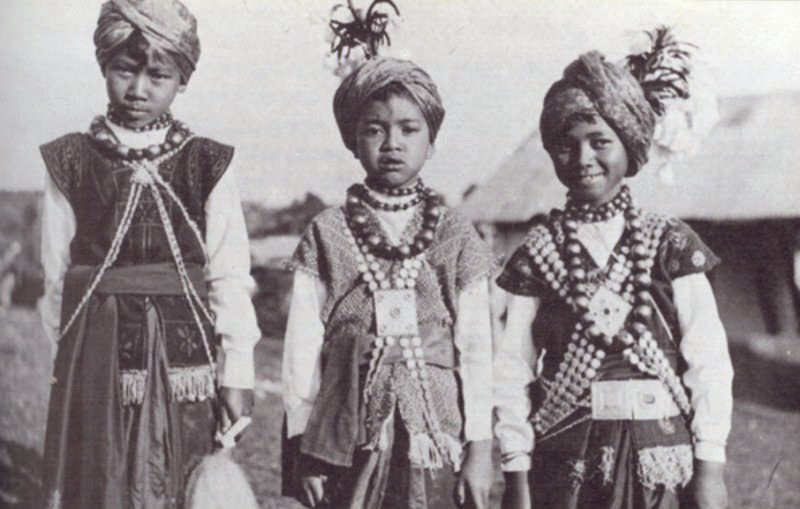
Khasi Hills children in traditional attire
Results of the Revival
►Between 7,000 and 8,000 came to Christ during the two-year revival.
►A passion for saving souls took possession of Christians.
►They had a greater love for the Word of God.
►Increased prayer took place for those in other nations.
►The Christians “became drunk with the love of God.”
►New songs were composed extemporaneously.
►Confession of sin and restitution took place.
►Stolen property was returned.
►Old debts were paid off.
►It was the children and young people who were mostly affected by this revival. With the young people having a personal encounter with Christ, it prepared leaders to carry the Church long into the future. One hundred years later, a revival in the same location again affected mostly children and young people (2006 Shillong Revival).
► The pagans were amazed at the transformation that took place among Christians.
►In the town of Shillong the Christian community had a large number of young people born to Christian parents but who had never had a direct encounter with God themselves. Through this revival, hundreds of them confessed Christ as their Savior.
►About 75% of the Meghalaya state is Christian today.
►The northeastern region of India is now the most Christianized part of India.
►When news of the revival was shared in other locations, the same would happen there. The 1906 Mizo Revival is one such example.
►Hundreds of missionaries have been sent out from this area of India.
►This was not an isolated revival. There were 100 locations throughout the country of India that experienced revival following the 1904 Welsh Revival. Two such examples in India were the 1905 Mukti Revival and the 1905 Revival at Dohnavur.
►The Khasi Hills Revival was the impetus for extraordinary prayer throughout Korea and China, which led to the 1907 Pyongyang Revival and the 1908 Manchurian Revival, among others.
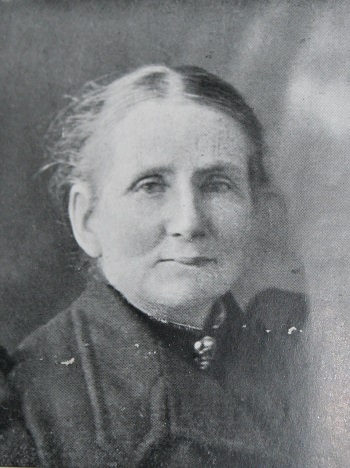
Mrs. John Roberts, writer of the
book “The Revival in the
Khasia Hills”
Sources
►Evangelical Awakenings in Southern Asia by J. Edwin Orr
►History of Christianity in India (Chapter 16) by M. M. Ninan
►Khasi People by Wikipedia
►Revival Fire Ignites in Northeast India as Presbyterians Pray by Carol Saia, The Sentinel Group
►Revival in India: Years of the Right Hand of the Most High by Helen S. Dyer
►The 10 Greatest Revivals Ever by Elmer Towns
►The Outpouring of the Spirit in Revival and Awakening and its Issue in Church Growth by J. Edwin Orr
►The Revival at Cherrapunji, Assam by J. Pengewern Jones
►The Revival in the Khasia Hills by Mrs. John Roberts
Return to List of Revival Stories
Chet & Phyllis Swearingen:
Office: (260) 920-8248
romans1015@outlook.com
Beautiful Feet
P.O. Box 915
Auburn, IN 46706

